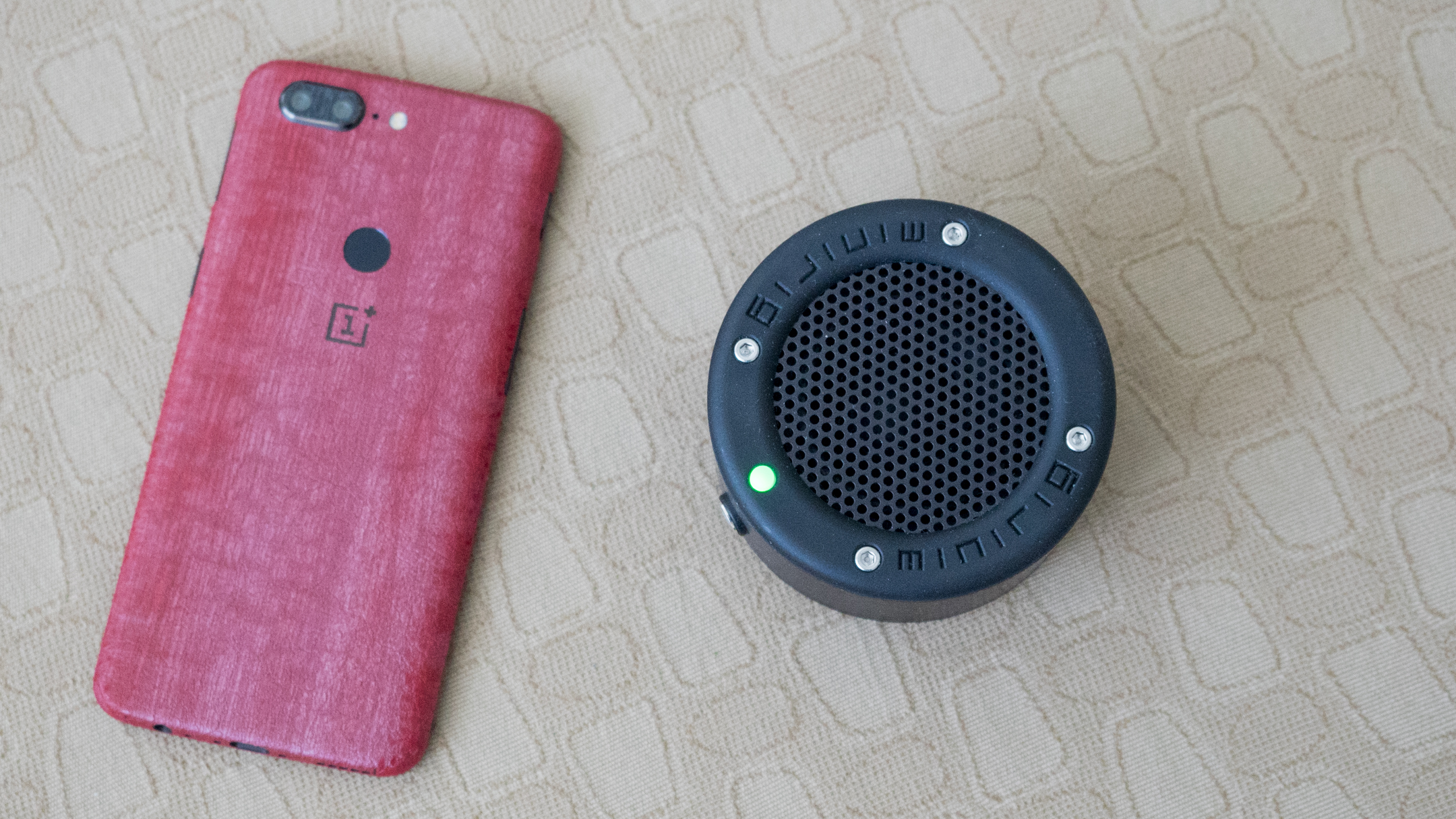TechRadar Verdict
The Minirig Mini is a lovely sounding, ultra-portable speaker that easily slips into a bag or pocket. It punches well above its weight sonically and has unparalleled endurance, however, we wish that the speaker was dust and waterproof so it would be a better companion for the great outdoors.
Pros
- +
Built like a tank
- +
Excellent sound
- +
Long battery life
Cons
- -
Not waterproof or dustproof
- -
Proprietary charging cable
- -
No speakerphone
Why you can trust TechRadar
Typically, petite wireless speakers don’t sound very good because of the physical limitations of cramming in a quality driver, battery and amplifier into a compact little shell. Most times, larger speakers usually have an advantage just because they have more space to slot in all these parts. But, once in a while, you’ll find a small speaker that punches well above its weight to rival the sound of the larger speakers.
The Minirig Mini is just one such speaker.
The Mini is roughly about the diameter of a can of soda, but cut in half. This is an ultra-portable speaker that you’ll have no problem putting into your bag or even a jacket pocket. It’s also built like a tank with its anodized aluminum housing, rubber bottom, and plastic grill cap.
After several weeks with the Minirig Mini, we were blown away by its sound quality, especially considering its size. All genres of music sound great, and its ultra-portable form factor made it easy to take with us just about anywhere.
It’s not perfect, but for music lovers who are sick of mediocre sounding wireless speakers, the Minirig Mini is an excellent value.

Design
The Minirig Mini is one of the smallest Bluetooth speakers we’ve ever tested: The diminutive speaker comes in at 84mm wide and 53mm tall and is built to withstand abuse. Its chassis is made out of anodized aluminum to help resist knocks and scratches. The bottom of the speaker is covered in silicone to dampen vibrations on surfaces and the speaker grill is secured into place by a tough plastic ring.
There’s a single button on top of the Mini that controls everything from power and pairing to gain settings. However, the button can also be remapped using Minirig’s mobile app, allowing you to use it to use the button for playback controls if that's more your speed. Speaking of the app, you can even tell it to use the button’s LED as a VU meter, causing it to pulse to the beat of the music playing.

Flip the the Minirig Mini over you’ll find a proprietary charging port. It’s a bit annoying not to have USB charging, but it’s not a dealbreaker. The opposite side of the chassis houses two 3.5mm analog jacks; one for high gain and one for low gain. These ports also allow you to do creative things like physically linking up multiple Minirig speakers or adding a subwoofer. (However, the Minirig Mini is also capable of wireless stereo pairing, too.)
While there is no dust or waterproofing, Minirig says the Mini is “splashproof.” It’s a bummer the Mini isn’t waterproof as it would have been the ultimate travel speaker that you can use in the hotel or bring to the beach.
Performance
The Minirig Mini has no business sounding as good as it does, especially for its size. The speaker gets impressively loud with 15 watts of power driving a single 52mm woofer. Sound fires directly upward so you don’t get a sense of directional audio like you do with 360-degree speakers like the Bose SoundLink Revolve or UE Wonderboom. This isn’t a bad thing, as the speaker still does an admirable job of creating a sense of space whilst playing in mono.
We tested a variety of music genres with the Minirig Mini and it all sounded excellent. However, bass-heavy tracks left us wanting more impact and extension. But bass is well balanced and well represented for a speaker of this size. No, you won’t get the room-rattling bass of a large speaker like the Sony SRS-XB40, but the Minirig Mini matched the UE Wonderboom’s bass impact and extension.
The Minirig Mini shines in its mids, making listening to vocal and acoustic music an absolute joy. Mids were velvety and sounded much more natural than most wireless speakers, including much larger ones like the JBL Pulse 3 and UE Blast. Highs were nicely extended and never sounded sibilant. The included aptX support undoubtedly helps the Minirig Mini sound its best.

At high volumes, there is a bit of distortion, especially in the bass as the single woofer struggles to provide enough impact, leading to a hollow and wooden sounding beat. Highs at max volume are slightly harsh but still very controlled.
In terms of battery life, we saw about 8 to 10 hours of playback listening in high-gain at around 75% volume. You can extend the battery life to a staggering 30 hours if you play at low volume, claims Minirig. There’s an additional power saver feature in the app that limits bass output to squeeze out even more play time.
Verdict
The Minirig Mini is an amazing sounding speaker for its size. Sound is balanced and there’s even a bit of bass to be had, which isn’t always the case with small speakers. While the bass response is good, mids are where the Mini shine, allowing vocal and acoustic music to sound natural. You even get a sense of an instrument’s texture.
If Minirig made the Mini dust and waterproof, it would be the best portable speaker you can buy. Unfortunately, for the time being, the Mini is only “splashproof” so you wouldn’t want to take it to the beach. For nearly half the price, the UE Wonderboom is an excellent alternative. No, it doesn’t sound as good as the Minirig Mini, but it’s good enough for most people and can be submerged in up to a meter of water for 30 minutes without biting the dust.
But, all that said, if you care about sound and portability first and foremost, the Minirig Mini is an excellent travel speaker.
- Need a new portable Bluetooth speaker? We've got you covered

